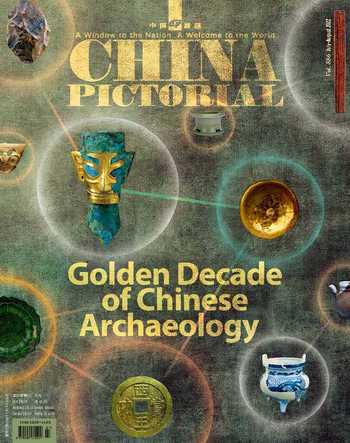Golden Age Indeed
by Zhou Xin
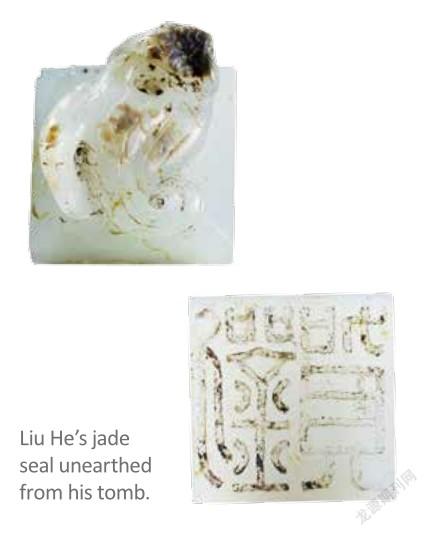
Liu He (92-59 B.C.), the Marquis of Haihun of the Western Han Dynasty(202 B.C.-8 A.D.), was not a well-known historical figure in China. Although he once sat on the throne of the empire, he was deposed within a month of his reign. He was the shortestreigning emperor of the Western Han Dynasty, and few historical records were left about him. However, the archaeological excavation of his tomb created a sensation.
Ahead of Tomb Robbers
In March 2011, the police department in Xinjian District of Nanchang City received a report from residents of Guanxi Village that a group of outsiders had arrived in their village days previously and rented a house from local people. Locals became suspicious of the visitors behavior: They went out at night several times in a row, causing village dogs to bark fiercely, and flashes of light were seen on Mount Guodun, about a kilometer southeast of Guanxi Village.
According to clues provided by the villagers, the police arrested a tomb robbery gang and seized the cultural relics they stole along with their tools.
“The tomb robbers accurately dug towards the center of the tomb from the top of the earth mound,” said Yang Jun.“According to general rituals and customs, there would be something in the middle of the tomb. However, this tomb had the room-like structure of the Western Han Dynasty, and the center of the tomb was empty. They would have succeeded if they had been allowed to keep working for one more day.” Yang is a researcher at the Jiangxi Provincial Institute of Cultural Relics and Archaeology and leader of the archaeological excavation of the tomb of the Marquis of Haihun. After the robbery hole was located, he rushed to the scene as soon as possible.
The tomb robbers “loss”was a luck for the countrys cultural heritage protection drive. Excavation of the tomb began immediately. As excavation progressed, the mystery as to the owner of the tomb was solved, and he was Liu He, the Marquis of Haihun. “It took a year to remove the soil sealing the tomb,” Yang said. The main tomb chamber was equivalent to building an eight-meter-deep palace in the ground according to the rank of a marquis and then pressing seven meters of soil on top.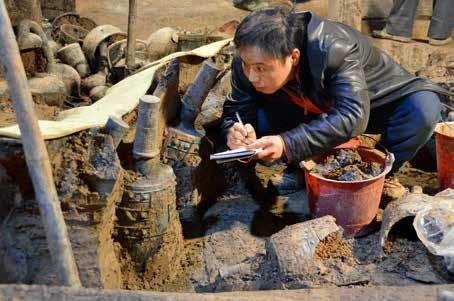
In general, the entire cemetery has a trapezoidal layout, with an area of about 46,000 square meters. It consists of two main tombs—one for Marquis Liu He and the other for his wife, as well as seven auxiliary tombs, a burial pit, and tomb walls, gates, bedrooms, ancestral halls, wing rooms, temples, and dwellings for tomb keepers. The cemetery has a complete road system and drainage facilities.
To optimally protect the cultural relics, low-oxygen working space technology in aerospace was adopted for the first time during excavation. Yang stressed that protection and restoration of important cultural relics must be carried out in anaerobic or hypoxic state. For that reason, the Jiangxi Provincial Institute of Cultural Relics and Archaeology set up a 20-square-meter hypoxic workshop capable of maintaining pure nitrogen with oxygen of less than one percent and relative humidity that can be adjusted within a range of 20 to 80 percent to reduce the damage to cultural relics caused by normal air composition. Archaeologists must wear oxygen masks to work inside it.
“Great Gold Tomb”
The tomb of the Marquis of Haihun caused a sensation due to the astonishing volume of gold ware, hence its nickname “Great Gold Tomb.” Archaeologists unearthed 385 gold cakes, 50 horseshoe-shaped gold ingots, 25 Kirin-toe-shaped gold ingots, and 20 gold plates, for a total weight of more than 120 kilograms and with purity of 99 percent. Yang believes that the tomb had the best-preserved and most concentrated collection of gold relics ever excavated from Han tombs in China. It testifies to why the Western Han Dynasty was regarded by Westerners as a dynasty rich in gold.
So far, the cemetery of the Marquis of Haihun is the only with real chariots and horses as burial objects ever found in areas south of the Yangtze River in China. The chariot and horse burial pit is located on the west side of the main tomb. Archaeologists found five painted wooden chariots and traces of 20 horses in the pit as well as more than 3,000 pieces of exquisite gold and silver chariot decorations.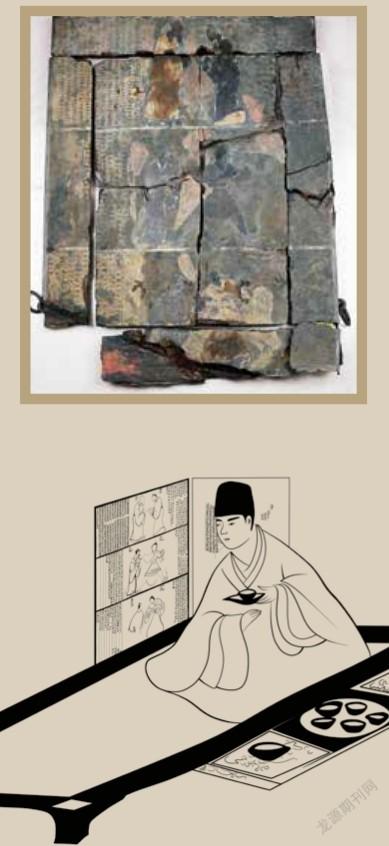
Some 5,200 bamboo slips were unearthed from the tomb. Among them, archaeologists discovered the chapter“Knowing” of The Analects of Confucius that had been missing for 1,800 years.
The archaeological excavation of the tomb has helped people learn more about Liu He and the hidden history of his short time on the throne. In historical records, Liu was labeled as “doing fatuous things and possibly endangering the country,” but the archaeological discoveries sent a different message. “We found no evidence for anything fatuous,”said Xin Lixiang, head of the expert team for the archaeological excavation of the tomb of the Marquis of Haihun and former director of the Committee of Qin and Han Archaeology of the Chinese Society of Archaeology. He said that the unearthed cultural relics show Liu He had been well educated, verifying a depiction of him “holding a pen and bamboo slips” in historical records. He argued that Liu Hes ouster may have been the result of power struggle in the royal court.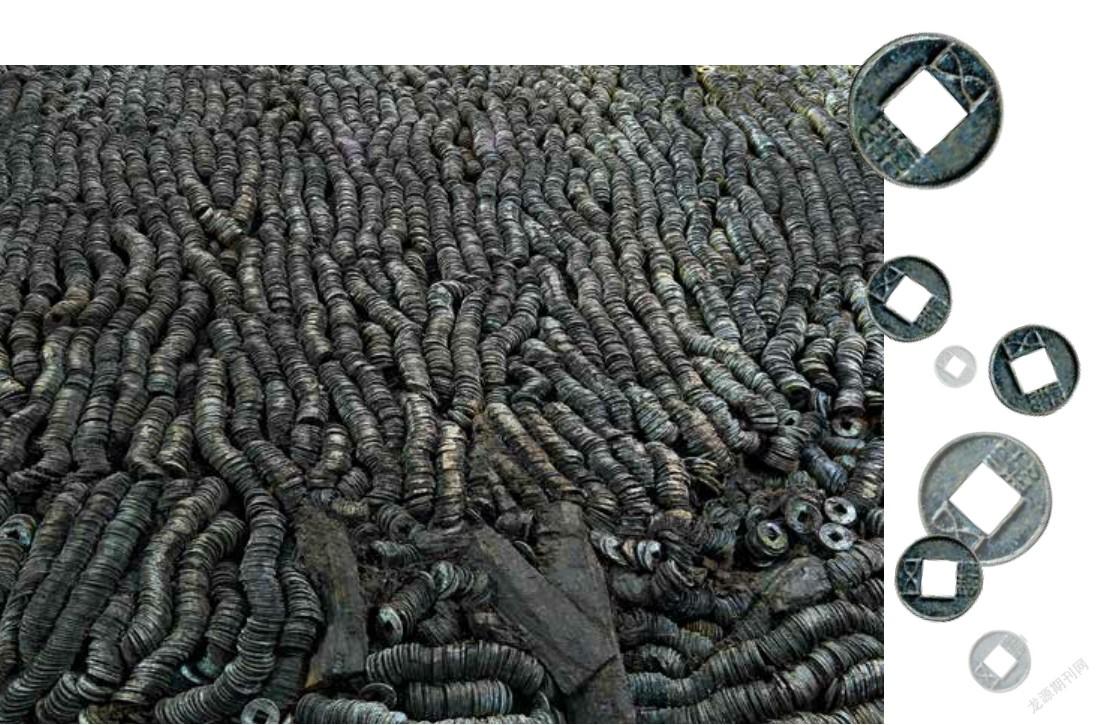
The excavation of cultural relics is only the first step of archaeology. The excavation of the tomb of the Marquis of Haihun lasted five years, but represents only the start of archaeological research of the tomb. According to Yang Jun, the cultural relics unearthed from the tomb are so diverse and numerous, and they would be difficult to protect. He estimated a decade or two for complete research and protection, insisting that the task would stretch beyond a single generation of researchers. Perhaps it will take two generations to finish this project.

